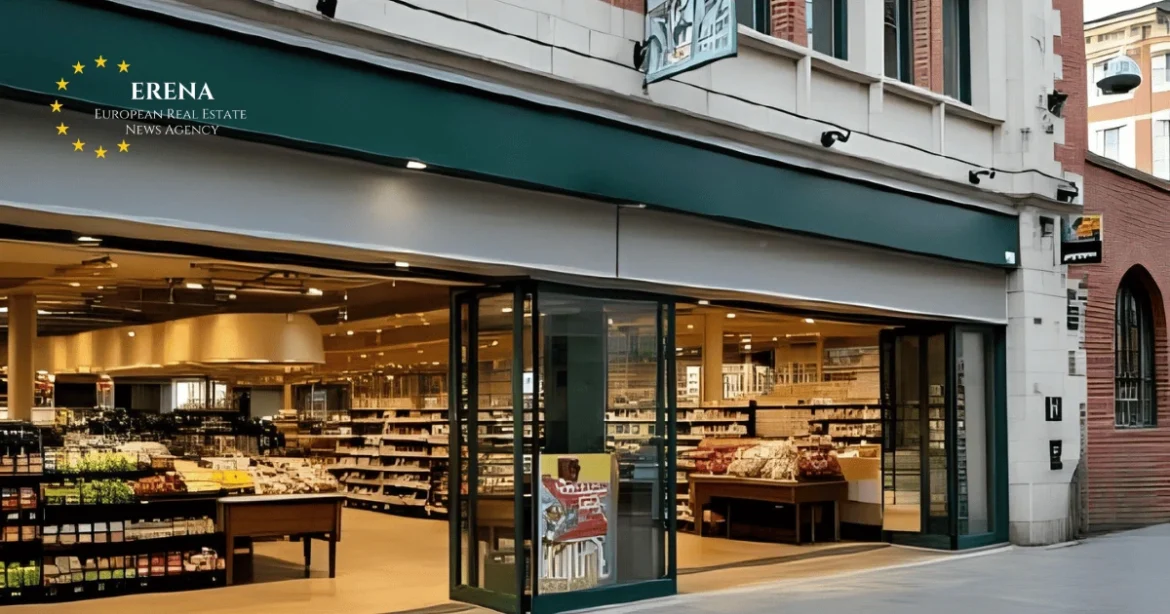Amazon has announced plans to shut down its entire network of 19 Amazon Fresh stores in the United Kingdom. Five locations are set to be converted into Whole Foods Market stores, while the remaining 14 will close permanently. The move ends one of Amazon’s boldest physical retail experiments in Europe less than five years after the first London outlet opened in March 2021.
What Amazon Announced
The company confirmed it has begun consultations with staff ahead of the closures. Five Fresh stores will be transformed into Whole Foods Market locations, while the rest will cease trading.
“We continue to invent and invest to bring more choice and convenience to UK customers through Amazon.co.uk, Amazon Fresh, and Whole Foods Market stores,”
— John Boumphrey, Amazon UK Country Manager
From 2026, Amazon will integrate fresh grocery delivery into its main UK platform with same-day service, allowing customers to order perishable goods such as meat, fish, and dairy alongside other products in a single basket.
Where the Stores Are
The Fresh network was almost entirely concentrated in London: 18 of the 19 stores were in the capital, with one suburban branch in Sevenoaks, Kent. Locations included Aldgate, Angel, Euston, Holborn, Kensington, Liverpool Street, Moorgate, Monument, Notting Hill Gate, Southwark, Wembley, West Hampstead, White City, Wood Wharf, Chingford, East Croydon, Hounslow, and Hoxton. Amazon has not yet disclosed which five will be converted into Whole Foods.
For London landlords and high-street operators, the exit frees up prime retail units likely to be swiftly repurposed by food and beverage brands, gyms, or healthcare providers.
Why the Fresh Concept Failed
Amazon Fresh was built around “Just Walk Out” technology, allowing customers to pick items and leave without using a checkout, with cameras and sensors recording purchases. Despite strong publicity, the format never gained broad consumer traction.
Analysts highlight that British shoppers are highly price-sensitive and loyal to established grocers with strong rewards schemes. Tesco and Sainsbury’s dominate the mainstream market, while Aldi and Lidl command credibility as discounters. Maintaining cashier-free technology proved costly, and Fresh lacked a clear value advantage. By mid-2025, meal deal prices illustrated the competition: Tesco £3.40 with a Clubcard (£3.90 without), Sainsbury’s £3.95, and Asda £3.74. In such an environment, Fresh failed to stand out.
Supplier and Regulatory Headwinds
Amazon also faced scrutiny over its treatment of suppliers. In 2025, the Groceries Code Adjudicator launched an investigation into delayed payments. That year’s GCA survey ranked Amazon last among UK grocers for compliance with the supply code. For smaller producers already battling high inflation, these delays added further strain and hurt Amazon’s reputation.
Industry and Expert Commentary
“The online retailer that seemingly can do little wrong just cannot get grocery right.”
— Mark Faithfull, Forbes retail analyst
Industry experts argue Amazon’s strengths lie in e-commerce, where it can scale logistics and leverage Prime memberships, rather than in costly high-street formats. The closures are seen as a strategic reset, not a complete withdrawal from groceries.
What It Means for the Market
For UK consumers, the immediate impact is fewer checkout-free options on the high street but greater online convenience. Amazon is shifting focus from novelty to speed and integration.
For competitors, the retreat removes a potential disruptor in London’s convenience sector. Tesco, Sainsbury’s, Aldi, and Lidl will continue to lead price competition, while Waitrose maintains its premium niche. Whole Foods’ planned growth to 12 stores by 2026 will increase pressure in affluent districts, particularly among health-conscious shoppers.
For landlords, the closures release valuable units in transport hubs and dense residential areas, expected to be filled quickly by coffee chains, gyms, or healthcare services.
Final Perspective
Amazon’s decision to wind down Fresh stores underscores the harsh realities of the UK grocery market. Thin margins, fierce competition, and price-sensitive consumers left little space for costly experiments. Innovation at the checkout was not enough to unseat discounters and loyalty-driven supermarket giants.
Yet Amazon is not exiting groceries altogether. By expanding Whole Foods in premium areas, improving supplier relations, and integrating fresh produce into its UK platform, the company is betting British shoppers will ultimately choose speed, variety, and digital convenience over in-store novelty. Whether that bet pays off will depend on price competitiveness in an era of persistent food inflation.

